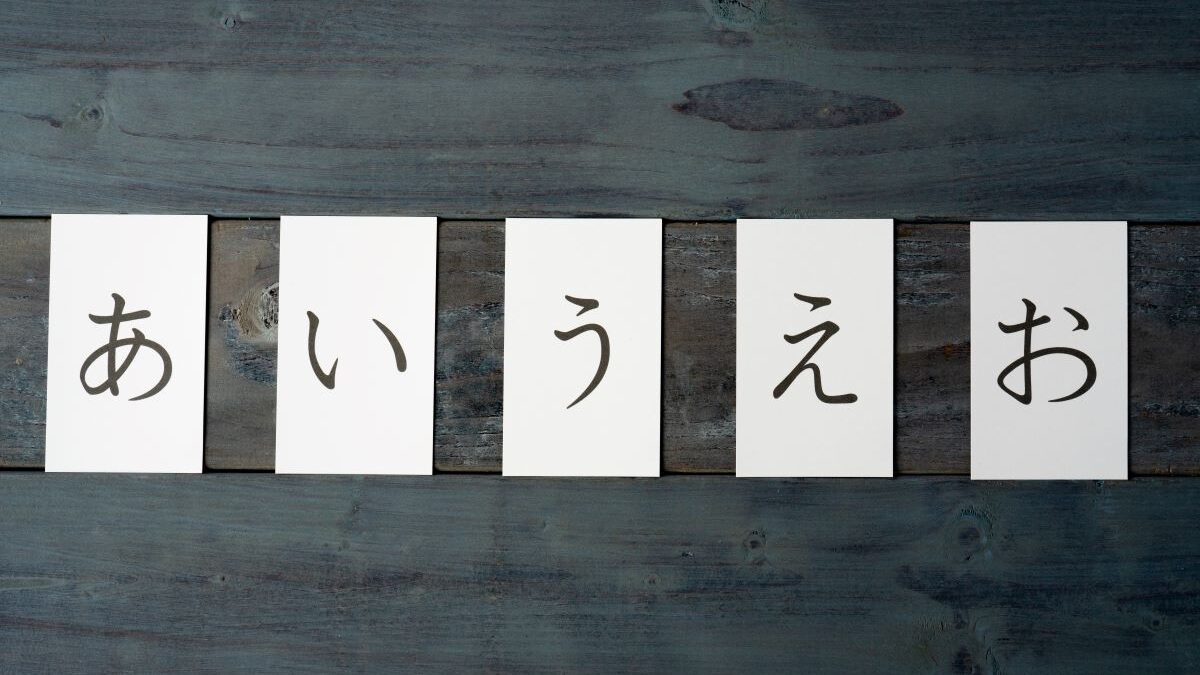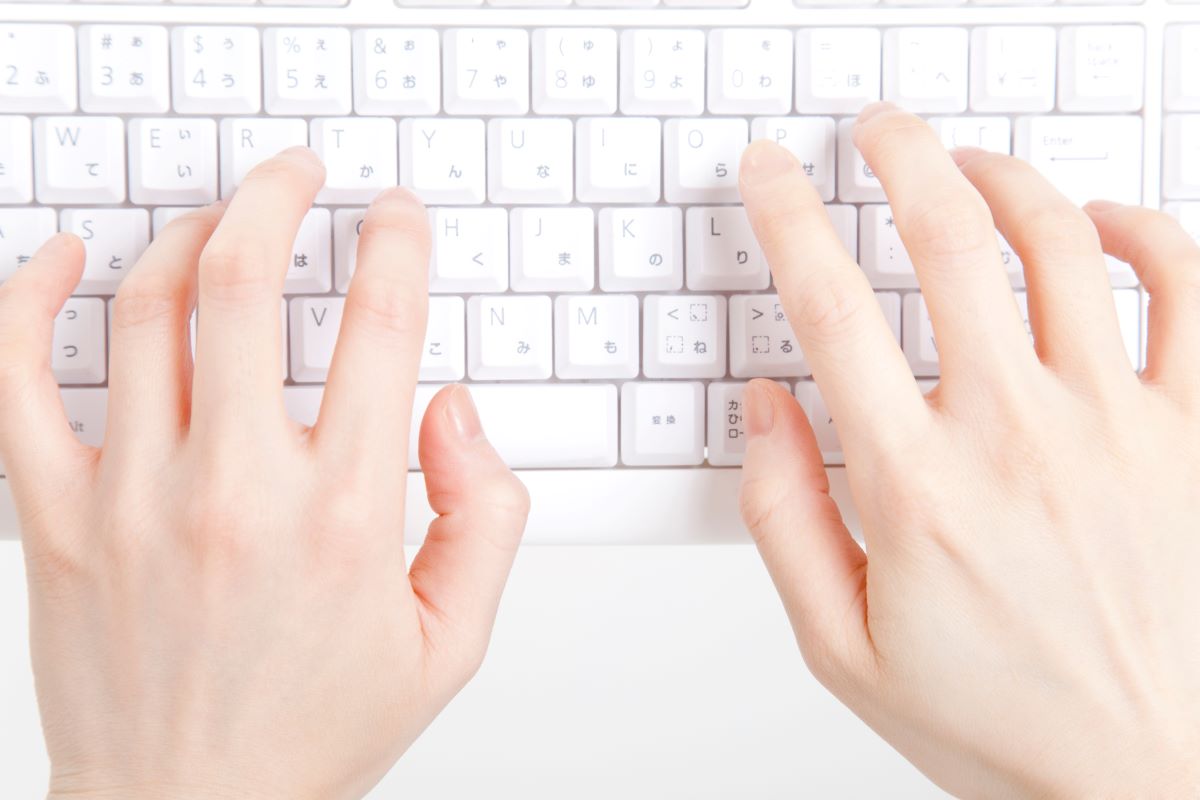If you are beginning to learn Japanese, you should start with hiragana. Native Japanese speakers also learn hiragana first.
The Japanese writing system use three different characters: hiragana, katakana, and kanji, with hiragana being the most basic character. Hiragana is used for writing sentences, but it also represents syllables. The English alphabet has different pronunciations depending on the preceding and following letters, but hiragana has only one pronunciation per letter, making it relatively easy to learn.
Hiragana has 46 basic characters and several variants, all of which are explained in this article. To master Japanese, you need to memorize all the hiragana characters and sounds, including the variants, so please read this article and make sure you understand the basics.
50音(Goju-on)
Goju-on is the name for a set of basic hiragana characters. The reason for the gap between the name (Goju-on means 50 syllables) and the number of characters (46 characters) is that there were originally 50 characters. Over time, some of the characters fell out of use, but the name remained. The five characters that are no longer used are the ones that are left blank in the table below. The last character “ん” is not a Goju-on character, but it is generally included in the Goju-on.
In the table below, you can see all the basic hiragana characters and the sound of each hiragana indicated by English alphabet . The sounds are created by ondoku3.com.
*I have explained that there is only one way to pronounce hiragana, with the exception of “は”, which has two pronunciations. “は” is usually pronounced “ha”, but only when used as a postpositional particle, it is pronounced “wa” instead of “ha”.
e.g.
はじめまして (“ha”jimemashite) / Nice to meet you
わたしはベンです (watashi “wa” ben desu) / I am Ben
こんにちは (konnichi “wa”) / Hello
こんばんは (konban “wa”) / Good evening
“こんにちは” and “こんばんは” were originally sentences abbreviated from sentences such as “こんにちは (ご機嫌いかがですか) / Good day (How are you?)” and “今晩は(月がきれいですね)/ Good evening (The moon is beautiful). Therefore, the “は” at the end is a particle and it is pronounced “wa” instead of “ha”.
Recommended way to remember Goju-on
Japanese has only five basic vowels (a i u e o), and the characters after the second line are composed of consonants plus the letter a i u e o. For example, the consonant in the second line is “k”, so the second line characters are “か き く け こ (k+a k+i k+u k+e k+o)”.
Once you have memorized the first line “あ い う え お” and the leftmost letter of each line (あ か さ た な は ま や ら わ), you can easily memorize the Goju-on characters by adding (a i u e o) to the consonants in each line.
あ (no consonant)
か (k)
さ (s)
た (t)
な (n)
は (h)
ま (m)
や (y)
ら (r)
わ (w)
濁音 (Daku-on) (゛)
Hiragana has several variants in addition to the basic Goju-on. Daku-on is one of these variants.
Daku-on is characters in the か, さ, た, and は lines with the Dakuten symbol (゛). Daku-on sounds are muddy.
“じ” and “ぢ” have the same sound and so as “ず” and “づ”
半濁音 (Handaku-on) (゜)
Handaku-on is characters in the “は” line with the Handakuten symbol (˚). The consonant is p.
拗音 (You-on) (small “や・ゆ・よ” ゃ・ゅ・ょ)
The sounds that combine the “い” column characters with small や ゆ よ (ゃ ゅ ょ) are called You-on. They are used as in “きゅうり (cucumber)” or “りょこう (travel).”
| きゃ kya | きゅ kyu | きょ kyo |
| しゃ sha | しゅ shu | しょ sho |
| ちゃ cha | ちゅ chu | ちょ cho |
| にゃ nya | にゅ nyu | にょ nyo |
| ひゃ hya | ひゅ hyu | ひょ hyo |
| みゃ mya | みゅ myu | みょ myo |
| りゃ rya | りゅ ryu | りょ ryo |
| ぎゃ gya | ぎゅ gyu | ぎょ gyo |
| じゃ ja | じゅ ju | じょ jo |
| ぢゃ ja | ぢゅ ju | ぢょ jo |
| びゃ bya | びゅ byu | びょ byo |
| ぴゃ pya | ぴゅ pyu | ぴょ pyo |
“じゃ” and “ぢゃ” have the same sound and so as “じゅ” and “ぢゅ” and “じょ” and “ぢょ”.
促音 (Soku-on) (small “つ” っ)
Soku-on is a sound represented by a small “つ”. that is not pronounced. It is like a rest in music. It is used in words such as “がっこう (school)” and “ずっと (for a long time).”
長音 (Chou-on)
Chou-on is a long vowel sound. Chou-on is written by adding a vowel. Which vowel is added is determined by the following rules.
- If the character before the chou-on is “あ” column character, add “あ”.
おかあさん (mother), おばあさん (grandmother) - If the character before the chou-on is “い” column character, add “い”.
おにいさん (older brother), おじいさん (grandfather) - If the character before the chou-on is “う” column character, add “う”.
すうじ (number) ,くうかん (space) - If the character before the chou-on is “え” column character, add “い”.
えいが (movie), けいさつ (police)
Exception: Add “え” for “おねえさん (older sister)” - If the character before the chou-on is “お” column character, add “う” or “お”.
おはよう (Good morning), おとうさん (father), とおい (far), おおきい (big)
That’s all about how to read hiragana. Start memorizing Goju-on in the order they appear. After that, you will be able to memorize them easily by reading them aloud repeatedly. Without learning hiragana, it will be difficult to progress in your Japanese learning, so do your best to learn them.



